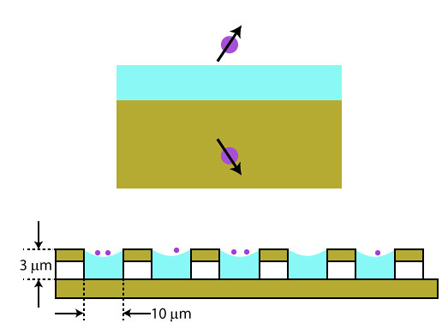Publications
- Fluxoid flucutations in mesoscopic superconducting rings
- Direct imaging of the coexistance of ferromagnetism and superconductivity at the LaAlO3/SrTiO3 interface
- Local measurement of the superfluid density in the pnictide superconductor Ba(Fe1-xCox)2As2 across the superconducting dome
- Spinlike susceptibility of metallic and insulating thin films at low temperature
- Persistent currents in normal metal rings
- A terraced scanning superconducting quantum interference device with submicron pickup loops
- Signal and charge transfer efficiency of few electrons clocked on microscopic superfluid helium channels
 Summary
SummaryElectrons bound to the surface of liquid helium has been proposed as a potential qubit. A qubit is a two state system that behaves quantum mechanically, and potentially would be the building block for a quantum computer. In the case of electrons on helium the electron is bound electrostatically to it's image charge reflected in an conductor below the liquid helium layer. The liquid helium acts as an impenetrable barrier and maintains the bound state. One of the challenges with building a quantum computer is finding quantum two state systems that maintain their coherence long enough to do a calculation. Electrons on helium are expected to have very long coherence times because they are relatively isolated in their environment. In this paper we show that by varying electrical potentials on a charge-coupled device (CCD)-like array, we can transfer individual electrons. This is a necessary step in creating quantum gates that will manipulate and entangle sets of electrons. The top picture shows and electron and it's image charge separated by a layer of liquid helium. The bottom picture shows a schematic of our CCD device that can transport electrons. |
| Guillaume Sabouret, Forest R. Bradbury, Shyam Shankar, Julie A. Bert, and Stephen A. Lyon, Applied Physics Letters 92 082104 (2008). Full Text |